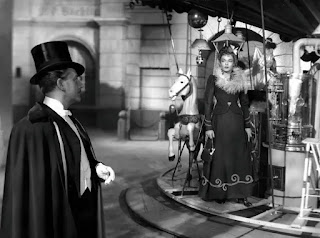La Ronde (Max Ophuls, 1950, France)
La Ronde is Max Ophuls's return to European cinema after a period of exile in America. It marked the beginning of a period that would be characterized by his most significant films, including The Earrings of Madame de... (1953) and Lola Montes (1955). La Ronde is noteworthy first and foremost as an adaptation of Vienesse author Arthur Schnitzler's 1897 play Reigen. One of Ophuls's last films made in his native Germany was an adaptation of Schnitzler - Liebelei (1933) - so it is fitting that his return to the continent was also a Schnitzler adaptation. Like Ophuls, Schnitzler was a Jewish artist. Schnitzler's plays, with their overt sexual themes, often courted controversy and were outright banned.
La Ronde is essentially a series of sexual encounters between various members of Viennese society, all of whom are connected in one way to one another. It is remarkable how frank the film is on sexual matters, particularly in the context of - for example - American cinema at the time. Nevertheless, it aroused the concern of both French censors and American censors. The film notably features actress Simone Signoret, who appears as a prostitute in the film. She would go on to become one of the most iconic actresses of the French cinema and, not unlike Ophuls and Schnitzler, she had a Jewish background.
La Ronde shows many of Ophuls's characteristic stylistic traits, including sweeping dolly shots, smooth camera movements, and tracking shots. There is a clear nostalgia in the film for an imagined turn-of-the-century Vienna, which lends the film a noteworthy charm. While La Ronde has been perhaps overshared by some of Ophuls's other works, it is nevertheless worth visiting for fans of the director and fans of Schnitzler. Schnitzler is perhaps known moreso know for writing the novella upon which Kubrick's Eyes Wide Shut is based.
7/10




Comments
Post a Comment